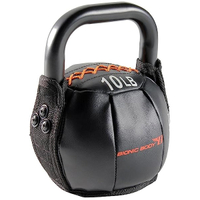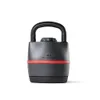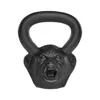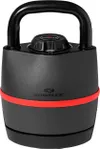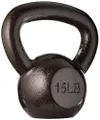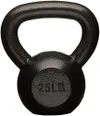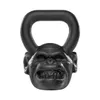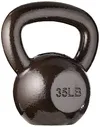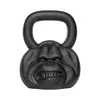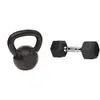
Ask me how I most enjoy training and I’ll tell you it’s when there are the best kettlebells to play with. And while I don’t get to use them as often as I like, I love tackling a kettlebell complex when I do.
A kettlebell complex means linking exercises together into a sequence — think of a yoga flow but with kettlebells. The aim is to build endurance and strength by constantly holding the muscles under tension without rest between moves. It’s an intelligent way to increase load if you don’t have heavy weights.
And if you haven’t tried a complex before or are looking for a new kettlebell routine to try, I’m sharing one of my go-to's below. Check out the video for the exercises, plus a rundown of how to perform the routine. Get ready to lock in.
Watch the 3-move kettlebell complex video:
Designed to strengthen and power up your entire body, these three moves test your hips, glutes and legs, shoulders, arms, back and chest. And what kettlebell workout would be complete without a muscle-torching core work component?
Kettlebells are near-perfect strength and conditioning tools allowing you to have a free range of motion while building stronger muscles, increasing balance, coordination, and stability and learning new movement patterns.
The workout:
9-minute EMOM (Every Minute On the Minute)
Sign up to get the BEST of Tom's Guide direct to your inbox.
Get instant access to breaking news, the hottest reviews, great deals and helpful tips.
x 3 rounds
- Kettlebell swing x 10 reps (per side)
- Kettlebell squat clean x 8 reps (per side)
- Kettlebell push press x overhead squat x 6-8 reps (per side)
Start with a 9-minute EMOM. Perform the kettlebell swings for 10 reps on one side, 10 reps on the other, then rest for the remainder of the minute. On the next minute, move into your squat clean for 8 reps per side, then rest, and do the same with your overhead squat. Complete 3 rounds.
Adjust the weights and reps if you can't finish the reps in the given time. Increase the weight or reps if you are resting for more than 15 seconds per round — aim for roughly 10-15 seconds of rest each time.
15-minute EMOM (Every Minute On the Minute)
x 10-15 rounds
Build the kettlebell complex using this 15-minute EMOM. Perform one rep of each movement back to back on one side without rest as demonstrated in the video, then do the same on the other side. For example, start on the right side, perform a swing, squat clean, push press and overhead squat, then move to the left side and repeat.
Next, complete two reps of each exercise, starting on one side, then switching to the other. Continue to add a rep each round, completing as many rounds as possible until 45 seconds.
Rest for 15 seconds, then on the next minute, start from the beginning (one rep) and try to reach the same number of reps and rounds each time, always resting at the 45-second mark. Aim for 10-15 rounds. Yes, you read that right.
1. Kettlebell swing
Start with the kettlebell swing (learn how to do a kettlebell swing here, plus variations to try) using one arm only. Keep the action powerful and explosive, snapping your hips forward and squeezing your glutes as you drive the weight up.
During the first EMOM, try to switch the weight mid-air at shoulder height after you’ve completed the reps on one side. During the second EMOM, complete reps only on one side, then move to the squat clean. You'll come back for the second side once you've done the complex on the first side.
2. Kettlebell squat clean
Learning how to squat clean is technically challenging but worth learning as it allows you to transition weights from the ground to the shoulder with explosive power, speed and control. Keep the weight close to your body and follow the video closely.
During the first EMOM, perform reps on one side, then switch sides. During the second, only complete reps on one side, then move to the next exercise without rest.
3. Kettlebell push press x overhead squat
Use the push press to bring the kettlebell into the overhead position — you only need to do this once. Then, keep the weight pressed overhead for the overhead squat reps without resetting, keeping the arm locked close to your head.
The overhead squat is seriously challenging for those with limited mobility around the hips, knees, or ankles. It demands good posture and back strength to keep the chest lifted, weight shelved and back straight as you lower into a full-depth squat.
Go light and keep your body weight toward your heels, driving your hips down and backward without leaning forward onto the balls of your feet. I recommend some lower body mobility exercises beforehand, which should help you sit lower more easily.
Bionic Body 10 lbs Soft Kettlebell: was $39 now $33 at Amazon
Metal kettlebells have their place, but if you're working out at home or in an apartment, you might want to avoid the sounds of heavy metal with this soft kettlebell instead. Plus, it's a lot less painful if you accidentally knock yourself while practicing kettlebell swings or halos around your head.
Trainer tips:
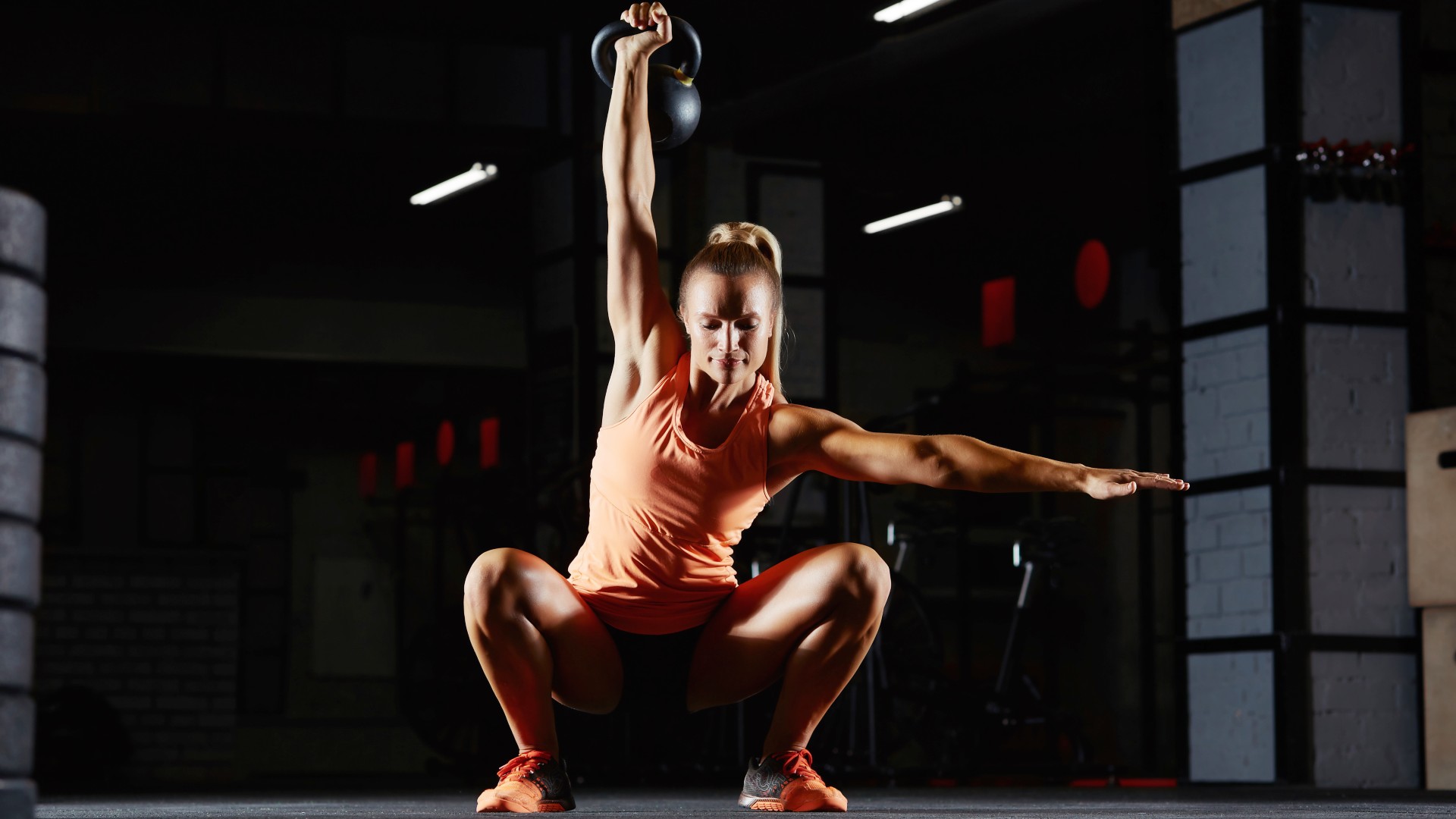
Unless you have an adjustable kettlebell like our top-rated Bowflex SelectTech 840 kettlebell or the JAXJOX KettlebellConnect 2.0, I recommend lifting a weight that allows you to perform the overhead squat with proper form.
It might mean lifting a slightly lighter weight than usual for other exercises, as the OH squat requires stability, balance, posture and upper back strength to shelve the weight as you lower into a squat without folding the chest forward. If the other exercises feel too easy as a result, increase the rep count per exercise.
Common mistakes include leaning forward, lifting the heels and rounding the back, plus allowing the arm to travel away from the shoulder in the overhead position, so keep an eye out for these weak spots.
I also recommend a solid foot-ground connection with a pair of lifting shoes — I wear the Puma Fuse 2.0, included in our best cross training shoes guide — as they help keep my feet properly grounded during the squats.
If you are particularly tight through the lower body and know squats are a weak spot (me too), adopt a slightly wider foot stance to help you find depth. Point your toes 45 degrees outward and drive through your heels, pushing your knees out in line with your toes throughout.
Remember to warm up thoroughly beforehand, using mobility exercises over stretches to prepare and mobilize your muscles and joints for movement.
More from Tom's Guide
- We asked a running coach why do sprinters need more muscle than distance runners — and tips on how to be a stronger runner
- No, not sit-ups — these are the two abs exercises you need to sculpt a six-pack, according to a personal trainer
- Forget squats — these 3 moves target your glutes and strengthen your lower body

Sam Hopes is a level 3 qualified trainer, level 2 reiki practitioner and senior fitness writer at Tom's Guide. She is also currently undertaking her Yoga For Athletes training course. Sam has written for various fitness brands and websites over the years and has experience across brands at Future such as Live Science, Fit&Well, Coach, and T3.
Having worked with fitness studios like F45 and Virgin Active, Sam now primarily teaches outdoor bootcamps, bodyweight, calisthenics and kettlebells. She also coaches mobility and stretching-focused classes several times a week and believes that true strength comes from a holistic approach to training your body.
Sam has completed two mixed doubles Hyrox competitions in London and the Netherlands and finished her first doubles attempt in 1:11.
